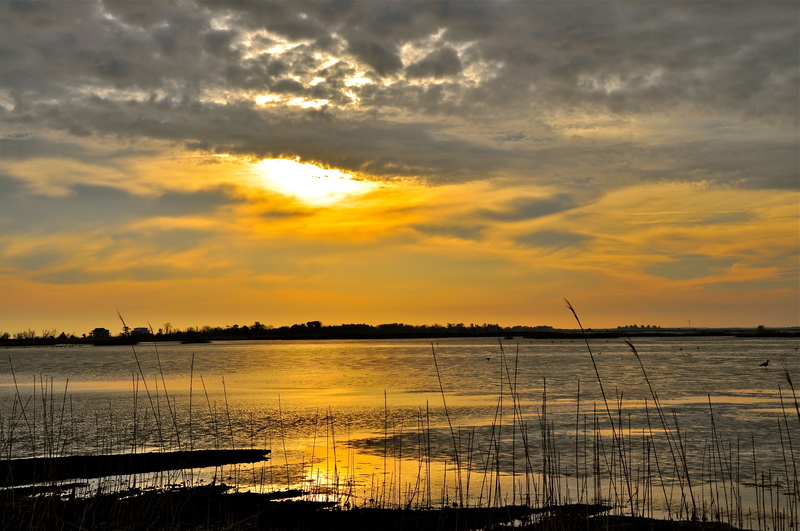Estuary experts paint a bleak picture for Prime Hook National Wildlife Refuge, where marsh is dying and the beach is eroding.
Storm-related breaches along the shoreline at Fowler Beach have allowed the free flow of Delaware Bay saltwater into the marsh, producing major ecological changes. Directly affected by the breaches, Unit 2, formerly a large freshwater marsh, had converted to open, bay water by the fall of 2011, said Delaware Coastal Program researcher Robert Scarborough.
He presented his findings this week during the Partnership for the Delaware Estuary's Environmental Summit in Cape May, N.J.
Unit 1, already a saltwater marsh, is now threatened with too much water – some spilling over from Unit 2 – and a lack of adequate tidal flow. “The marsh is drowning,” Scarborough said. Data shows the tidal flow is less than 1 foot in the marsh. Scarborough said it takes 4 to 5 feet of tidal range to maintain a viable marsh.
About 70 percent of the water that flows into the refuge comes through the breaches, Scarborough said, and 40 percent of the sediment brought in from the bay remains in the marshes. But that sediment is not enough to rebuild the marsh naturally. The breaches have allowed the free flow of saltwater into the refuge for three to four years, and waves and wind from Hurricane Sandy only exacerbated the problem.
Scarborough estimated it could take up to 7 million cubic yards of sediment to rebuild the marshes: 2 million to 3 million cubic yards in Unit 1, and 3 million to 4 million cubic yards in Unit 3. By comparison, in 2005 the U.S. Army Corps of Engineer used less than 2 million cubic yards of sand to replenish Rehoboth and Dewey beaches.
The U.S. Fish & Wildlife's 15-year conservation plan for the refuge includes filling in the breaches and repairing the dunes as well as rebuilding the refuge's four impoundments to saltwater marshes. Gov. Jack Markell has asked federal officials for $20 million to repair damage within the refuge, including filling in the breaches at Fowler Beach.
A tale of two towns
It's a tale of two towns at a pair of bayfront villages bordering the refuge. At Broadkill Beach, beach erosion is the problem while at Primehook Beach, flooding from the marsh side of the island is the problem.
Broadkill Beach, which suffered beach erosion and home damage during Hurricane Sandy, has lost significant beach over the last decade, Scarborough said. Using aerial photographs, Scarborough found that from 1937 to 2000, beach erosion averaged about 3 to 5 feet per year, but that number jumped to 20 feet per year starting in 2000. Since 1937, the beachfront has eroded 400 feet. A few homes that were behind the dunes are now near the water at high tide; a handful sit on pilings in the water even at low tide.
Scarborough said Primehook Beach has been hit with erosion, but not as much as Broadkill Beach even though Broadkill is a public beach that has been the recipient of beach replenishment projects in the past. Primehook Beach is a private beach and is not eligible for taxpayer-funded replenishment projects.
Because of the degradation of the marsh, there is little to no protection from high tides and storms on the backside of Primehook Beach.




























































